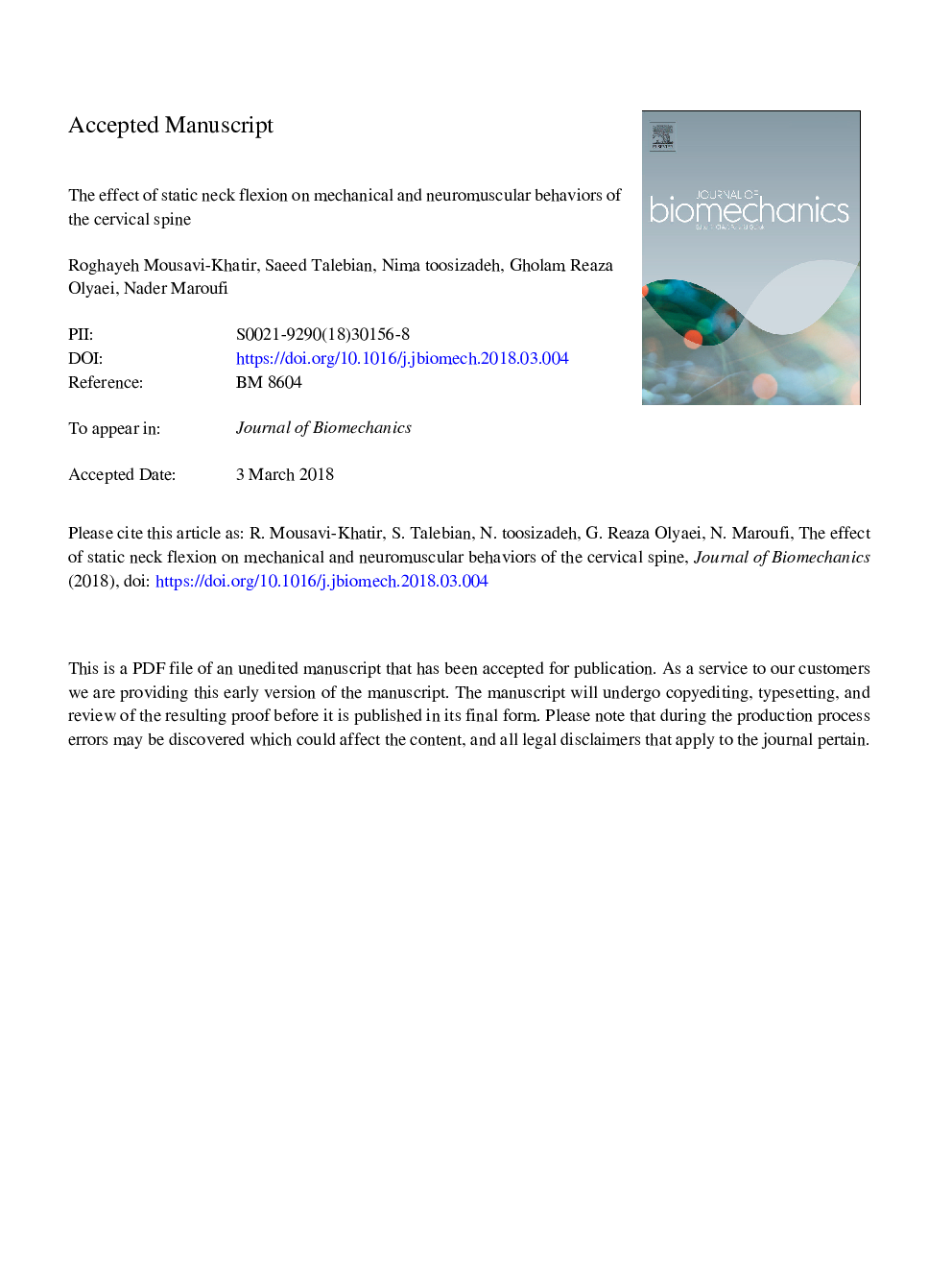| Article ID | Journal | Published Year | Pages | File Type |
|---|---|---|---|---|
| 7236322 | Journal of Biomechanics | 2018 | 33 Pages |
Abstract
Occupations that involve sustained or repetitive neck flexion are associated with a higher incidence of neck pain. Little in vivo information is available on the impact of static neck flexion on cervical spinal tissue. The aim of this study was to assess changes in mechanical and neuromuscular behaviors to sustained neck flexion in healthy adults. Sixty healthy subjects aged 20-35â¯years participated in this study. The participants were exposed to static neck flexion at a fixed angle of full flexion for 10â¯min. Mechanical and neuromuscular responses of the cervical spine to sudden perturbations were measured pre- and post-exposure. Magnitude of load-relaxation during flexion exposure, stiffness, peak head angular velocity, and reflexive activities of cervical muscles were recorded. Effective neck stiffness decreased significantly, especially in female participants (Pâ¯=â¯0.0001). The reflexive response of the cervical erector spinae muscles to head perturbation delayed significantly (Pâ¯=â¯0.0001). Peak head angular velocity was significantly increased after exposure to neck flexion for 10â¯min, especially in female participants (Pâ¯=â¯0.001). In the present study, static flexion resulted in changes in mechanical and neuromuscular behavior of the cervical spine, potentially leading to decreased stiffness of the cervical spine. The results confirm the importance of maintaining a correct head and neck position during work and improving the work environment to reduce the cervical spinal load and work-related neck pain.
Keywords
Related Topics
Physical Sciences and Engineering
Engineering
Biomedical Engineering
Authors
Roghayeh Mousavi-Khatir, Saeed Talebian, Nima Toosizadeh, Gholam Reaza Olyaei, Nader Maroufi,
